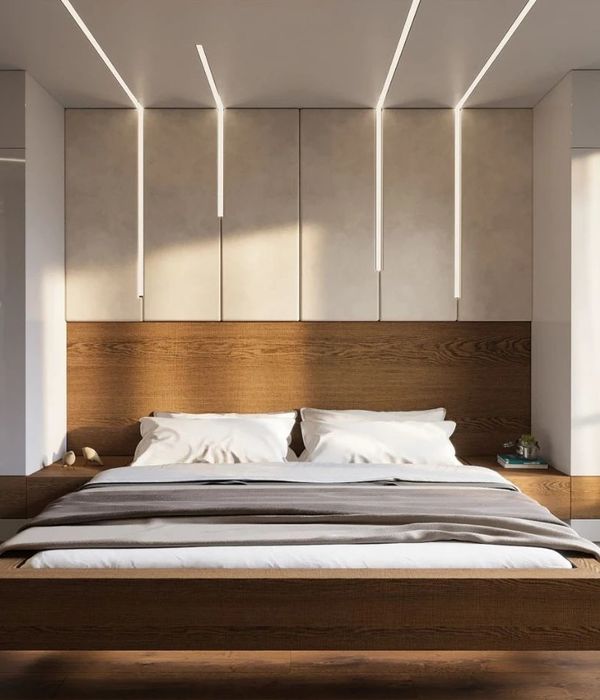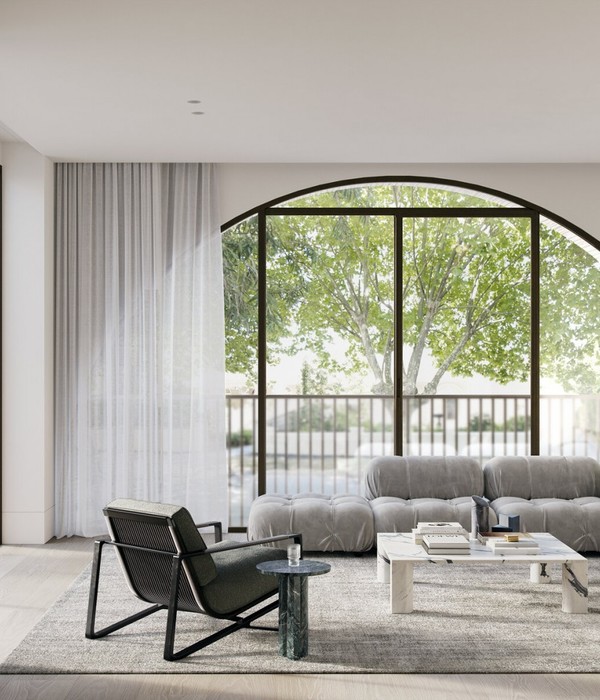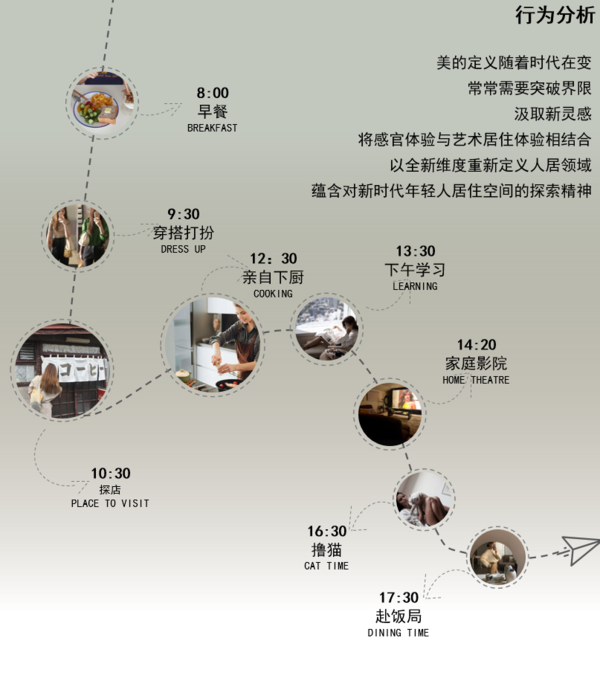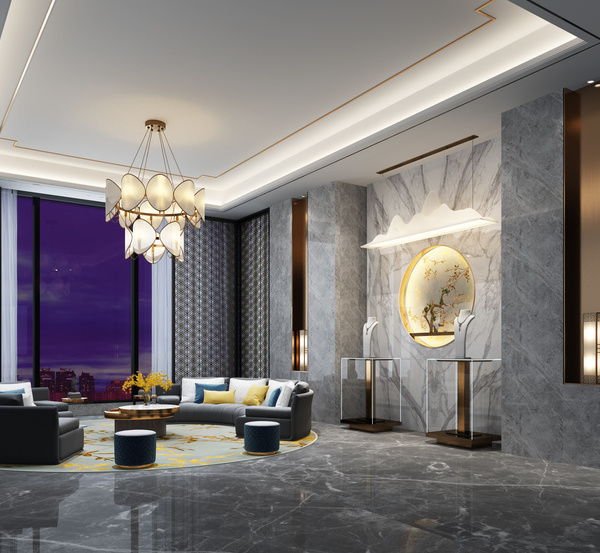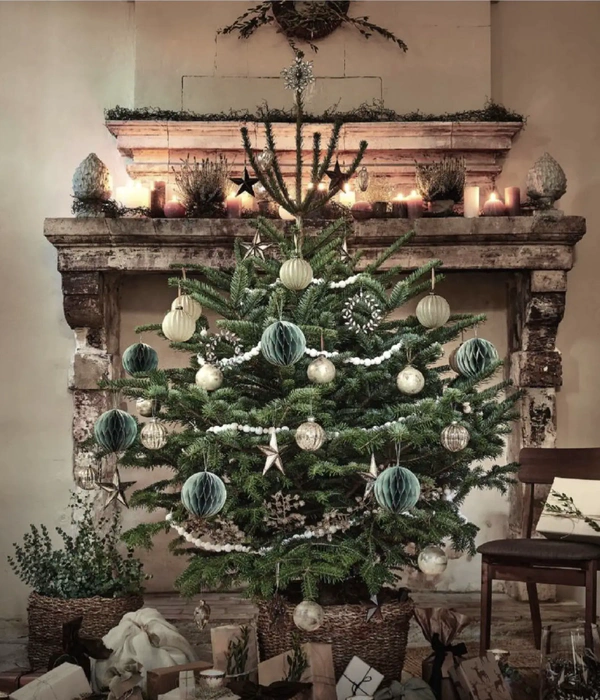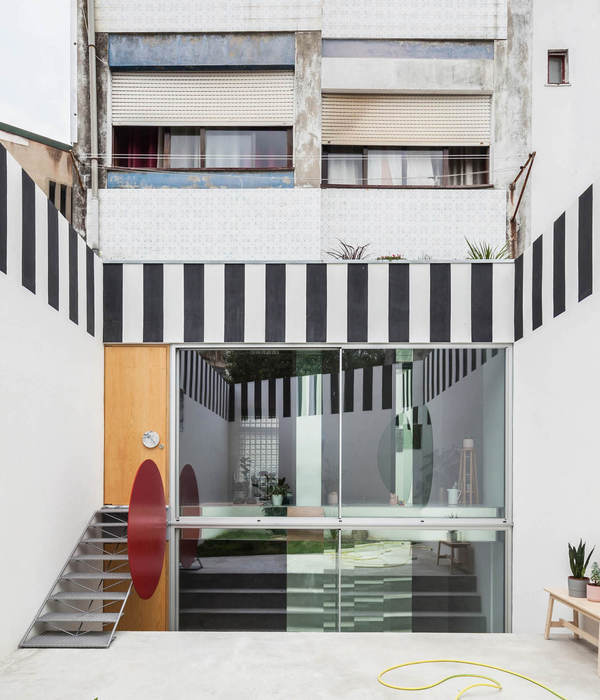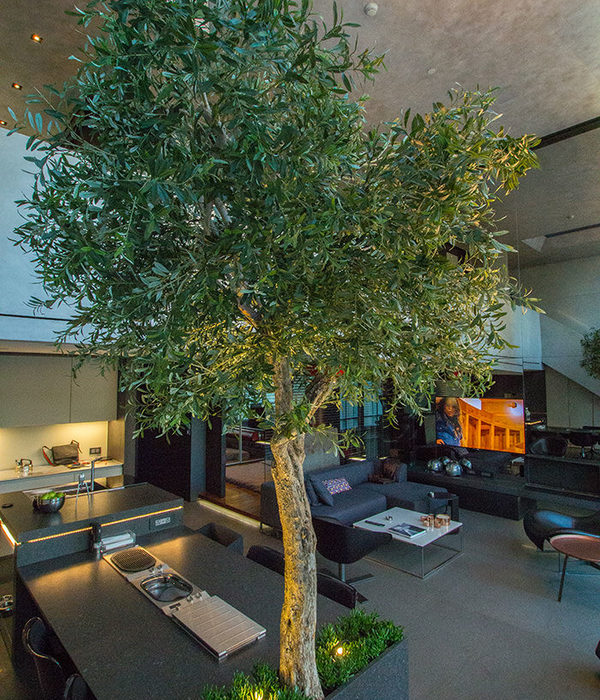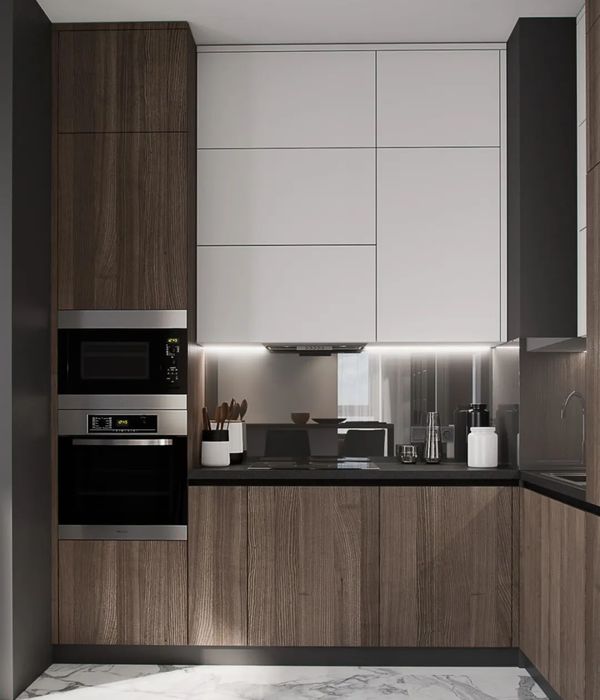“我们通过情绪感受来感知氛围,这种感知形式会快速地起作用,而且我们人类明显需要这种能力帮助我们生存。在我们以细节和理智理解空间之前,我们会感受到一个空间中的气氛。我们可能无法对一个空间的特征和意义进行牢固的把握,但我们首先会感受它的氛围和整体图像。这是一种直觉和情感的能力,很大程度上是无意识的,通过进化本能产生的。“—— 彼得·卒姆托(瑞士建筑家、普利兹克建筑奖得主)本期导读
空间是具有时间性的。
可是你真的理解这种时间性吗?
在重复麻木的都市中生活,怎样才能不将你身边的城市看成是一幅照片?
怎样才能感知你身边的空间?
我们怎么能确定我们的身体跟空间的关系?
我们怎么能重新配置它?
我们怎么知道我们对空间有没有影响?
如果说这种感知让我们感受到真实,那么让我们再深入一点,是谁来决定什么叫现实?
Who decides what reality is?
在本期内容中,我们将为大家介绍一位可能已经不再需要介绍的艺术家
奥拉维尔·埃利亚松(Olafur Eliasson)。
▲ 2016 埃利亚松应凡尔赛宫邀请的作品之一 Waterfall
动图来自 知乎作者 @回目 埃利亚松 | 创造太阳的造梦者
内容由派尚设计撰写、翻译、整理,未经授权,不得转发。
参考资料:1.【红砖 | 特稿】奥拉维尔·埃利亚松:制造太阳
2. 埃利亚松 | 创造太阳的造梦者
出生于丹麦的奥拉维尔·埃利亚松(Olafur Eliasson)已经风靡艺术界。他在伦敦泰特美术馆(Tate Museum)非常受欢迎的天气项目(The Weather Project)将观众沉浸在一个人工镜像的环境中,拥有自己隐约可见的太阳(以及它自己模拟的伦敦雾),并在此过程中吸引了200万游客。
参观的人群有的开始痛哭,好像面前的就是世界末日;有的觉察到自己身体的存在,开始与镜子中的自己互动,甚至忘我的舞蹈;大部分的人都选择躺下来,享受一场无与伦比的“日光浴”。太阳作为一个重要的标志,在埃利亚松“再造自然”的作品中反复的出现,但是除了太阳,他的作品中还出现过月亮、星辰、瀑布、雾霭、流水、彩虹……他让一切自然中最美好的存在,走进人们的生活,变成观察世界,感知自我的媒介。
这种沉浸式的力量笼罩着观者,从而调动其感官,使其参与到艺术作品的共同生成和创造中。
Olafur Eliasson
用空间和光束做试验
▼ Vedio From : Olafur Eliasson @TED2009
▼ 以下为演讲内容(中英文对照)我在柏林有一个工作室让我从这里开始-就在上个周末,那里刚下了一场大雪。
在工作室我们会做很多的试验我觉得这样的工作室更像是个实验室。
我偶尔跟一些科学家们见面。
我在柏林美术大学有一个学会。
每年我们都会将人们聚集起来,这个就叫做“生命的空间”。
“生命的空间”不一定是关于我们怎么做事,而是关于我们为什么这样做。
I have a studio in Berlin -- let me cue on here -- which is down there in this snow, just last weekend.
In the studio we do a lot of experiments. I would consider the studio more like a laboratory.
I have occasional meetings with scientists.
And I have an academy, a part of the University of Fine Arts in Berlin.We have an annual gathering of people, and that is called Life in Space.
Life in Space is really not necessarily about how we do things, but why we do things.
请你们看中间的那小十字架。你们继续看着它。不要理会我。你们会看见黄色的圆圈。你们看完我们要做一个残留图像的试验。没有圈子以后,你们会看见另一种颜色,是黄色的互补色。我在跟你们说的同时,你们的眼睛和脑子也就在给我回答。这个关于共享的想法,这样的想法把现实看成是我所说的和你所说的互相重叠-就好像一部电影。
Do you mind looking, with me, at that little cross in the center there? So just keep looking. Don’t mind me. So you will have a yellow circle, and we will do an after-image experiment. When the circle goes away you will have another color, the complementary color. I am saying something. And your eyes and your brain are saying something back. This whole idea of sharing, the idea of constituting reality by overlapping what I say and what you say -- think of a movie.
这两年以来,用柏林科技部给我们的奖学金,我一直忙于完成这些我们共同制作的电影。
我并不想说这部电影非常有趣。
显然从叙事角度来看,这部电影没有什么特别。
可不管怎么样,这部电影的潜力是-请你们继续看-它的潜力是,很明显的,要改变谁是发起人和谁是读者的界线。
换句话说,谁是消费者谁对你看到的事情负责任?
我觉得改变这个界线也含有社会方面的内容。
是谁来决定什么叫现实?
Since two years now, with some stipends from the science ministry in Berlin, I’ve been working on these films where we produce the film together. I don’t necessarily think the film is so interesting. Obviously this is not interesting at all in the sense of the narrative. But nevertheless, what the potential is -- and just keep looking there -- what the potential is, obviously, is to kind of move the border of who is the author, and who is the receiver. Who is the consumer, if you want, and who has responsibility for what one sees? I think there is a socializing dimension in, kind of, moving that border. Who decides what reality is?
这个是伦敦的泰特現代藝術館。可以说,展览的目的就是这个。我在半空放了一个半圆形的的黄色圆盘。我在天花板贴了一个镜子,还加了雾和岚。我的想法就是把那个空间变成可感知的。在那么大的空间内,问题是,在你身体能接收的空间和空间本身,很明显的,两者之间存在有差异的。我希望加入一些天然的元素,比如说雾,可以把空间变成可感知的。
This is the Tate Modern in London. The show was, in a sense, about that. It was about a space in which I put half a semi-circular yellow disk. I also put a mirror in the ceiling, and some fog, some haze. And my idea was to make the space tangible.With such a big space, the problem is obviously that there is a discrepancy between what your body can embrace, and what the space, in that sense, is. So here I had the hope that by inserting some natural elements, if you want -- some fog -- I could make the space tangible.
▼ The weather project, 2003
Tate Modern, London, 2003
Photo: Olafur Eliasson & Andrew Dunkley & Marcus Leith
然后人们就开始看到在这个空间中的自己。你们看这里。看这个女孩儿。当然,没办法的,在博物馆人们要用照相机。对吧?今天的博物馆就是这样的。但是注意她的脸,她像是就在照镜子,看镜中的自己。“哎,这就是我的脚嘛!”她不能确定她看到的是不是自己。所以,问题就是:我们怎么能确定我们的身体跟空间的关系?我们怎么能重新配置它?我们怎么知道我们对空间有没有影响?
And what happens is that people, they start to see themselves in this space. So look at this. Look at the girl. Of course they have to look through a bloody camera in a museum. Right? That’s how museums are working today. But look at her face there, as she’s checking out, looking at herself in the mirror."Oh! That was my foot there!" She wasn’t really sure whether she was seeing herself or not. And in that whole idea, how do we configure the relationship between our body and the space? How do we reconfigure it? How do we know that being in a space makes a difference?
你们还记得,我开始时说过的,更重要的是为什么,而不是怎么样?为什么的意思就是,“当我迈出一步会产生什么样的结果?”这个有关系吗?“我存在不存在于这个世界有什么关系?”我是否用责任感来过滤我的行动又有什么关系?艺术就是这样吗?我看是这样。这显然不仅是装饰世界和将它变得更漂亮。或者更差,如果你问我。
Do you see when I said in the beginning, it’s about why, rather than how? The why meant really, "What consequences does it have when I take a step?" "What does it matter?" "Does it matter if I am in the world or not?" "And does it matter whether the kind of actions I take filter into a sense of responsibility?" Is art about that? I would say yes. It is obviously about not just about decorating the world, and making it look even better, or even worse, if you ask me.
显然这是关于责任,像我这样把绿色燃料扔进河里在洛杉矶,斯德哥尔摩,挪威,东京等等。绿色燃料对环境没有什么坏处,可看起来很可怕。我觉得,另一方面,它很美。在世界上不同的地方,它也算是体现出市中心的喧嚣。
It’s obviously also about taking responsibility, like I did here when throwing some green dye in the river in L.A., Stockholm, Norway and Tokyo, among other places. The green dye is not environmentally dangerous, but it obviously looks really rather frightening. And it’s on the other side also, I think, quite beautiful, as it somehow shows the turbulence in these kind of downtown areas, in these different places of the world.
“绿河”这样的激进想法,不是展览的一部分,我只是想告诉人们,在城市里,就在他们走过的时候,他们就在空间的范围内。空间具有时间性。河流过城市也是需要时间。河水可以把城市变成可探讨的,可触知的的。我说可探讨的是说你做或不做是有区别的。如果你说:“我是这个城市的一部分,“这是很重要的。我投票也很重要。如果我表明态度,这也很重要。
The "Green river," as a kind of activist idea, not a part of an exhibition, it was really about showing people, in this city, as they walk by, that space has dimensions. A space has time. And the water flows through the city with time. The water has an ability to make the city negotiable, tangible. Negotiable meaning that it makes a difference whether you do something or not. It makes a difference whether you say, "I’m a part of this city. And if I vote it makes a difference. If I take a stand, it makes a difference."
▼ Beauty, 2015
Moderna Museet, Stockholm 2015
Photo: Anders Sune Berg
不把城市看成一幅图片的想法我认为,在艺术方面一直都很重要。这种把艺术看成是确定作为图片的意义和作为空间的意义的关系的观点,又有什么分别呢?想事和做事的区别。这就是一些不同的试验。我不想给你们讲得太仔细。冰岛,右下角,我最喜欢得地方。
This whole idea of a city not being a picture is, I think, something that art, in a sense, always was working with. The idea that art can actually evaluate the relationship between what it means to be in a picture, and what it means to be in a space. What is the difference? The difference between thinking and doing. So these are different experiments with that. I won’t go into them. Iceland, lower right corner, my favorite place.
这样的试验可以筛选出建筑模型。 这些是正在进行的试验。 有一个是我为宝马公司做的,计划用于制造汽车。 用冰做。 利用水晶结晶在顶部推砌的原理 我想把它作成冰岛的一个音乐厅。
一种跑道或者人行道,就在丹麦的一个博物馆的顶部,用彩色玻璃环绕着。 这样你每走一步,地平线的颜色也跟着变化。
两年前的夏天在伦敦的海德公园,蛇形艺廊内: 有一个时隐时现的亭子, 你只有在移动中才能看到那个亭子。
今年夏天,纽约: 瀑布的最大的特殊性 就是瀑布需要的时间。 这很简单也很基础。
These kinds of experiments, they filter into architectural models. These are ongoing experiments. One is an experiment I did for BMW, an attempt to make a car. It’s made out of ice. A crystalline stackable principle in the center on the top, which I am trying to turn into a concert hall in Iceland. A sort of a run track, or a walk track, on the top of a museum in Denmark,which is made of colored glass, going all around. So the movement with your legs will change the color of your horizon.And two summers ago at the Hyde Park in London, with the Serpentine Gallery: a kind of a temporal pavilion where moving was the only way you could see the pavilion. This summer, in New York: there is one thing about falling water which is very much about the time it takes for water to fall. It’s quite simple and fundamental.
I’ve walked a lot in the mountains in Iceland. And as you come to a new valley, as you come to a new landscape, you have a certain view. If you stand still, the landscape doesn’t necessarily tell you how big it is. It doesn’t really tell you what you’re looking at. The moment you start to move, the mountain starts to move. The big mountains far away, they move less. The small mountains in the foreground, they move more. And if you stop again, you wonder, "Is that a one-hour valley? Or is that a three-hour hike, or is that a whole day I’m looking at?"
如果周围有瀑布,就在地平线上;你看着那个瀑布,你会说,“哦,瀑布的水流得挺慢。”然后你说,“我的天啊,那个超级大瀑布还是挺远的。”如果瀑布的水流得快一些,那个瀑布大概就是比较小而且比较近的-因为流水的速度在任何地方都差不多是一样的。你的身体也算知道这些。所以瀑布可以说是测量空间的一种办法。
If you have a waterfall in there, right out there at the horizon; you look at the waterfall and you go, "Oh, the water is falling really slowly." And you go, "My god it’s really far away and it’s a giant waterfall." If a waterfall is falling faster, it’s a smaller waterfall which is closer by -- because the speed of falling water is pretty constant everywhere. And your body somehow knows that. So this means a waterfall is a way of measuring space.
▼ Waterfall, 2016
Palace of Versailles, 2016
Photo: Anders Sune Berg
埃利亚松应凡尔赛宫邀请的作品Waterfall以及其他作品
像纽约这种象征性的城市,在改变空间上也十分重要。可以说纽约看起来很大的。加上一种测量变得更有意思:那样的流水瀑布会让你想:“其实布鲁克林就那么大-布鲁克林和曼哈顿的距离,这么看起来,东河流域以下这么大呀。”
Of course being an iconic city like New York, that has had an interest in somehow playing around with the sense of space, you could say that New York wants to seem as big as possible. Adding a measurement to that is interesting: the falling water suddenly gives you a sense of, "Oh, Brooklyn is exactly this much -- the distance between Brooklyn and Manhattan, in this case the lower East River is this big."
不仅是绿化城市。同时也带来另一种体验。那么,我们为什么要这样做?因为一个处于大空间中的身体和一个只站在照片前面的身体,有很大的区别。还有:“哈哈,那边是照片,这边是我。这个有关系吗?”有没有后果?
So it was not just necessarily about putting nature into the cities. It was also about giving the city a sense of dimension.
And why would we want to do that? Because I think it makes a difference whether you have a body that feels a part of a space, rather than having a body which is just in front of a picture.
And "Ha-ha, there is a picture and here is I. And what does it matter?" Is there a sense of consequences?
如果我感受空间 如果我觉得空间是可感知的, 如果我感觉的到时间, 如果我可以将距离称为时间, 我觉的我有能力改变空间。 突然间, 感触空间一下子就变得容易了。 可以说这个 跟社区和集体有关。 是关于生活在一起。
So if I have a sense of the space, if I feel that the space is tangible, if I feel there is time, if there is a dimension I could call time, I also feel that I can change the space. And suddenly it makes a difference in terms of making space accessible. One could say this is about community, collectivity. It’s about being together.
我们怎么营造公共空间?“公共”到底什么意思?这样提问题,会引发很多关于议会,民主,公共空间,集体,个体的重要议题。我们怎么能想到一个容纳个体又包含集体的想法,而且不把这两个概念变成相反的对立呢?当然,世界上的政治议程尽可能地用不同,更标准化的观点将两者分开。
- How do we create public space? What does the word "public" mean today anyway? So, asked in that way, I think it raises great things about parliamentary ideas, democracy, public space, being together, being individual.- How do we create an idea which is both tolerant to individuality, and also to collectivity, without polarizing the two into two different opposites?- Of course the political agendas in the world has been very obsessed, polarizing the two against each other into different, very normative ideas.
我觉得艺术和文化,这就是为什么今天的艺术和文化那么有意思。它们证明了我们能创造出一个融合个人和集体的空间。关于因果关系和后果。关于我们怎么联系想法和做法。在想和做的过程中还有什么?在想和做的中间,我想说,肯定有经验。经验不仅是种不计因果的娱乐。也离不开责任。积累经验就是体验生活。体验生活其实就意味着担负责任。所以艺术,在那个层面上,我觉得,对我们现在的生活可以说是非常重要的。特别是现在。这就是我想说的。非常感谢。掌声。
I would claim that art and culture, and this is why art and culture are so incredibly interesting in the times we’re living in now, have proven that one can create a kind of a space which is both sensitive to individuality and to collectivity. It’s very much about this causality, consequences. It’s very much about the way we link thinking and doing. So what is between thinking and doing? And right in-between thinking and doing, I would say, there is experience. And experience is not just a kind of entertainment in a non-casual way. Experience is about responsibility. Having an experience is taking part in the world. Taking part in the world is really about sharing responsibility. So art, in that sense, I think holds an incredible relevance in the world in which we’re moving into, particularly right now. That’s all I have. Thank you very much. (Applause)
敲 · 黑 · 板
最后,如果你想亲临现场观看奥拉维尔·埃利亚松(Olafur Eliasson)的作品的话,现在可以在北京红砖美术馆看到他的主题展《道隐无名》,展出截止到8月12日。
知感行 Knowing Feeling Acting
By : Olafur Eliasson 奥拉维尔·埃利亚松
We all know a lot. 我们都知道很多。
How does knowledge feel? 这些知识感受起来会是怎样?
And how do you feel that you know? 你又如何知道你知道?
How do you feel what you know? 你又是怎样感受到你的所知?
How do your feelings feel? 你的这些感觉感受起来怎样?
Your felt feeling! 你感受到你的感觉!
Consult your feeling of being disconnected and being connected, 思考那些让你感觉被连结和被隔离的感受,Being indifferent or committed. 那些冷漠的时候,坚定的时候
Does feeling connected make you more empathic? 感觉到被连结的时候是否让你更能及人所感?
Does empathy make your surroundings more tangible? 及人所感是否让你的周遭变得更为确凿?
Are your feelings embodied knowledge? 你是否感觉到知识也因此变得具体?
Does your body drive action? 你的身体是否驱使着行动?
What space makes you want to act? 是什么样的空间让你想要行动?
Does your felt knowledge make space for others? 你是否感受到知识制造了空间及其他?
Your felt space! 你感受到了空间!
There is a difference between wanting to act and acting. 等候去行动和采取行动是不同的。
One is thinking, the other doing. 一个是想,另一个做。
Do you recognise the feeling of wanting to act but not acting? 你是否体会到了等候行动但什么也没有做的感受?
Hold this feeling. 保持这种感觉。
Then consult your own experience of empathic action. 此时,思考你自己移情行动的体验
Now pause. 暂停。
How does the discrepancy between the desire to act and the experience of action feel? 渴望做些什么和真的做了什么的感觉的差异如何?
Bring the pause to an end. 将这暂停持续到最后
派尚微杂志 issue 229
点击“阅读原文”
{{item.text_origin}}


